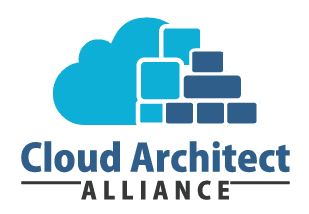
In the run up to the much anticipated Cloud Architect Alliance diner and award show on January 30th, our speakers give a sneak peak into what they have to say that night. First up is Maurits van der Drift, mission critical cloud engineer at Schuberg Philis. Van der Drift will talk about the sense and nonsense of cloud-native data lakes and how data can help to enhance business models.
Nothing more than a database?
Gone are the days when tens or hundreds of on premises or colocated servers were clustered with Hadoop to store and process unstructured data. Cloud-native data lakes offer a far more flexible way to create and maintain databases without the need to manage the physical hardware. Another major advantage is that cloud-native data lakes are not bound to a specific location, which makes planning and executing migrations (from data center to data center, for example), a thing of the past. Even though a cloud-native data lake may in its core function like a data warehouse or data base, its cloud-native nature offers far more possibilities.
“One might think the term ‘cloud-native’ is just marketing lingo for what is essentially a database”, Van der Drift says. “And even though that would be a legitimate take on the cloud-native data lake from a purely conceptual point of view, recent technological developments have really changed how data can be leveraged to add business value. The cloud is indispensable in this sense, because it offers an efficient, tailor made solution for data analysis and value extraction.”
Know what to look for before you take a dive
That being said, the promise of data lakes has not yet been fulfilled, Van der Drift observes. “When the idea of data lakes started to become more popular, there seemed to be no limit to the business value unstructured data could generate. Combined with AI and machine learning, many organizations were told they were sitting on massive amounts of useful data and they needed to tap into this new possible revenue stream. The truth is however that in many cases, the unstructured data organizations have is tough to leverage from a business perspective. In addition, even if value can be extracted from unstructured data, it can only be successfully leveraged if you know what you are looking for. In other words: you need to have made the business case for a cloud-native data lake before you actually start creating one.”
Even though Van der Drift has some reservations when it comes to ‘the promises of Big Data’, he notes there are many ways to create business value with data lakes. And it has become easier to do so. ‘A major advantage of cloud-native data lakes is the razor-sharp efficiency they bring. You don’t have to invest in hardware anymore, you don’t have to keep developers on your payroll to maintain your clusters and you only pay for what you use. Infrastructure costs for cloud-native solutions usually are only 10% of the total costs of a project. This means that a small increase in efficiency can rationalize a large increase in infrastructure costs. Needless to say, the threshold to use data analysis is lowered, but it remains important to know why you want to set up a cloud-native data lake and what the desired results are.”
Claim your free ticket for our upcoming event
Do you want to see Maurits explain when and how a cloud-native data lake can add business value? And would you like to enjoy the company of your peers and a free three course dinner while doing so? Join us January 30th 2020 during our next event: ‘How to build a cloud-native data lake & annual Election Night’. During this diner show, you will learn everything there is to know about cloud-native data lakes and can also enjoy the annual Cloud Architect of the Year election. There number of available tickets is limited so make sure to claim yours right now!
